

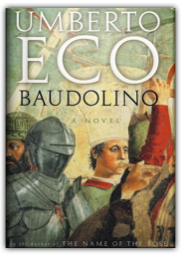
The most playful of historical novelists, Umberto Eco has absorbed the real lesson of history: that there is no such thing as the absolute truth. In Baudolino, he hands his narrative to an Italian peasant who has managed, through good luck and a clever tongue, to become the adopted son of the Emperor, Frederick Barbarossa, and a minister of his court in the closing years of the 12th century. Baudolino's other gift is for spontaneous but convincing lies, and so his unfolding tale—as recounted in 1204 to a nobleman of Constantinople, while the fires of the Fourth Crusade rage around them—exemplifies the Cretan Liar's Paradox: He can't be believed. Why not, then, make his story as outrageous as possible? In the course of his picaresque tale, Baudolino manages to touch on nearly every major theme, conflict, and boondoggle of the Middle Ages: the Crusades; the troubadours; the legend of the Holy Grail; the rise of the cathedral cities; the position of Jews; the market in relics; the local rivalries that made Italy so vulnerable to outside attack; and the perennial power struggles between the pope and the emperor. With the help of alcohol and a mysterious Moorish concoction called "green honey," Baudolino and his ragtag friends engage in typical scholastic debates of the period, trying to determine the dimensions of Solomon's Temple and the location of the Earthly Paradise. And when the Emperor needs support in his claims for saintly lineage, who but Baudolino can craft the perfect letter of homage from the legendary Prester John, Holy (and wholly fictitious) Christian King of the East? A giddy and exasperating romp, Baudolinowill draw you into its labyrinthine inventions and half-truths, even if you know better. —Regina Marler 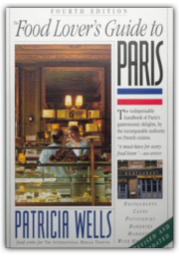
Let's face it. Finding the best of the fabled cuisine in Paris can be difficult for us Americans. We're thrown off by the language, the numerous terms for eateries, and the French themselves, who love to pretend they don't speak English. |
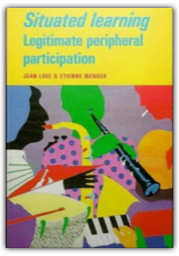
In this important theoretical treatise, Jean Lave, anthropologist, and Etienne Wenger, computer scientist, push forward the notion of situated learning—that learning is fundamentally a social process and not solely in the learner's head. The authors maintain that learning viewed as situated activity has as its central defining characteristic a process they call legitimate peripheral participation. Learners participate in communities of practitioners, moving toward full participation in the sociocultural practices of a community. Legitimate peripheral participation provides a way to speak about crucial relations between newcomers and oldtimers and about their activities, identities, artifacts, knowledge and practice. The communities discussed in the book are midwives, tailors, quartermasters, butchers, and recovering alcoholics, however, the process by which participants in those communities learn can be generalized to other social groups. 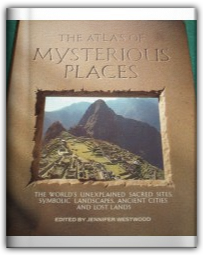

The mobile phone will soon become the most powerful channel for persuasion. This book presents 20 perspectives on how mobile devices can be designed to motivate and influence people - and how this emerging trend will change the way you live, work, and play. Contributing Authors: Ian Bogost, Peter Boland, Sunny Consolvo, Martin Cooper, Erik Damen, Will Dzierson, Dean Eckles, BJ Fogg, Paul Hedtke, Peter Heywood, Rachel Hinman, Eric Holmen, Alex Kass, George LeBrun, Deb Levine, Jerry Michalski, Eric Paulos, Michael Sarfatti, Ian Smith, Mirjana Spasojevic, Sebastien Tanguay, Josh Ulm, Steffen P. Walz, Sean White. 
The flavors and foods of summer in your kitchen all year long. 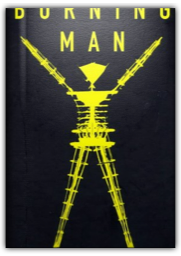
Wiredmagazine's book division, HardWired, has taken the rich color process that gives their newsstand editions such impact and put it to even better use here, producing a volume of full-page photographs uninterrupted by text or the eye-candy layout that make Wiredso amusing and difficult to read. This book features work by nearly a dozen photographers documenting the Black Rock Arts Festival, better known as Burning Man. This annual event draws thousands of revelers to a desolate stretch of desert for a few days of performance art, naked frolicking, and a bizarre, mock auto-da-fé wherein the giant wood and neon Burning Man is destroyed in the culmination of this festival of images. Sixteen pages of text separate the daylight photos from those taken at night, and the endpapers, prints of the cracked and empty desert surface, neatly wrap this exquisitely beautiful package. |

My Library
Collection Total:
1165 Items
1165 Items
Last Updated:
Sep 9, 2009
Sep 9, 2009

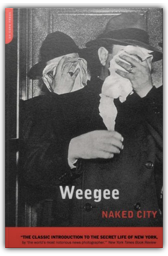


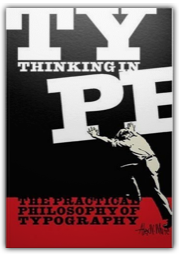
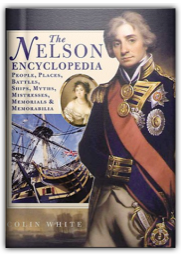
 Made with Delicious Library
Made with Delicious Library